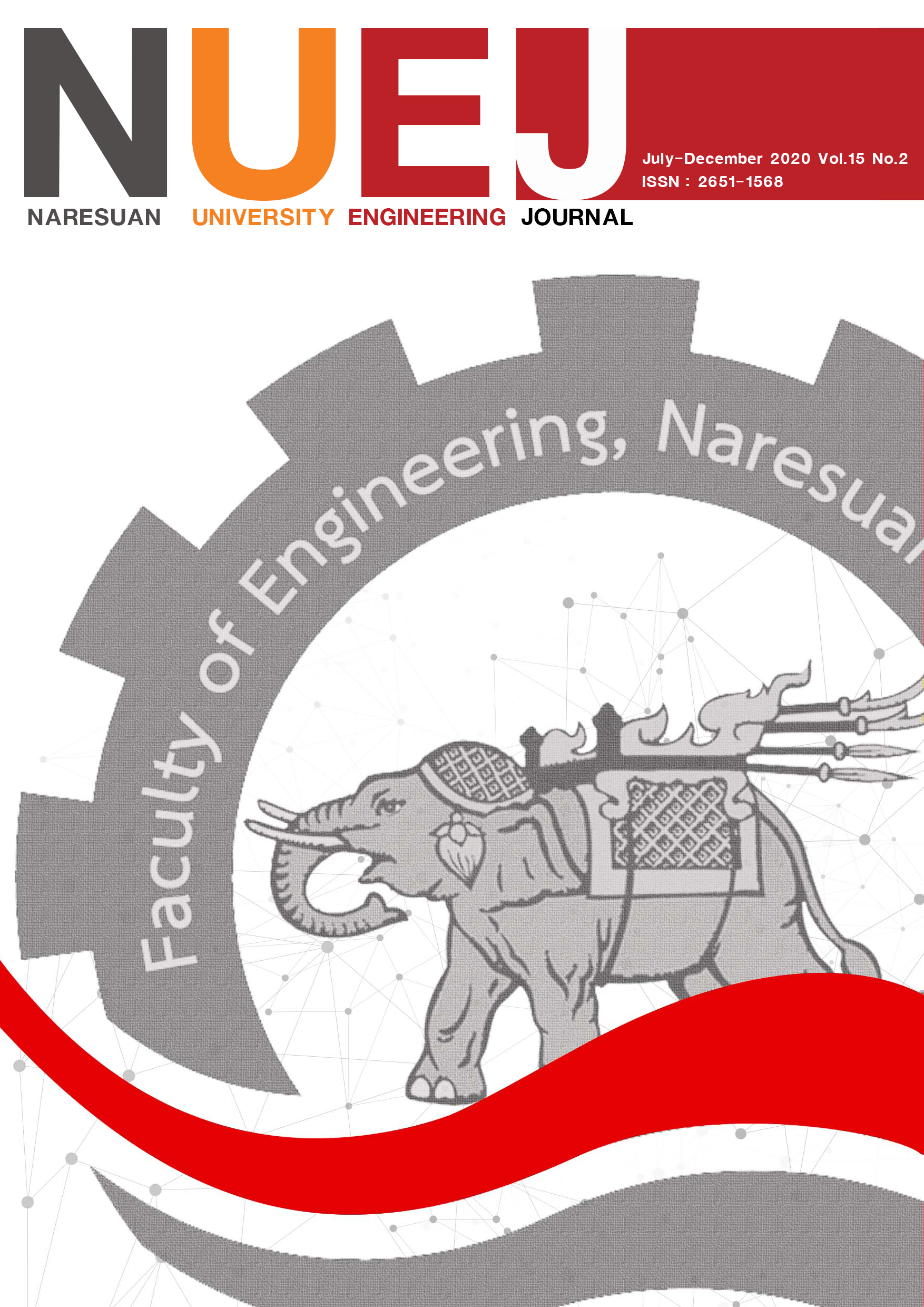Approach to Scheduling and Routing for Automated Guided Vehicles: A Case Study in the Manufacturing Industry
Main Article Content
Abstract
The focus of this article is a proposed scheduling and routing approach for automated guided vehicles (AGVs). This approach could be applied in a factory that has both old and new production systems in action. Both systems require different material handling processes. High frequency transportation is required to avoid idling the production line due to required handling equipment being unavailable. The purpose of this study was to calculate the optimum number of the AGVs required to ensure the lowest total idle time at production line work stations and of the AGVs.
Several dispatching rules were analyzed to achieve the best AGV scheduling rule. Man-machine charts were used to check the working relationships between work stations and AGVs. The shortest path model was applied to find the best route for an AGV to transport handling equipment from one point to another in the shortest time. Constraints on the model included velocity and load/unloading-time of the AGV and the conflict-free routing.
Actual data from a manufacturing plant were analyzed for the AGV routes in both unidirectional and bidirectional flow paths. The effect of different numbers of AGVs and proactive and reactive types of dispatching rules were analyzed and modelled. The lowest work station idle time, calculated for a single AGV operated in bidirectional flow paths applying the proactive dispatching rule that could achieve, was 2.98%.
Article Details
References
Baker, K. R., & Trietsch, D. (2009). Principles of sequencing and scheduling. John Wiley.
Bocewicz, G., Nielsen, I., & Banaszak, Z. (2014). Iterative multimodal processes scheduling. Annual Reviews in Control, 38, 113–122.
Fazlollahtabar, H., & Saidi-Mehrabad, M. (2015). Methodologies to optimize automated guided vehicle scheduling and routing problems: A review study. Journal of Intelligent and Robotic Systems, 77, 525–545.
Lacomme, P., Larabi, M., & Tchernev, N. (2013). Job-shop based framework for simultaneous scheduling of machines and automated guided vehicles.International Journal of Production Economics, 143, 24–34.
Lee, C. W., Wong, W. P., Ignatius, J., Rahmana, A., & Tseng, M.-L. (2020). Winner determination problem in multiple automated guided vehicle considering cost and flexibility. Computers & Industrial Engineering, 142, 106337.
Leung, J. Y-T. (2004). Handbook of scheduling: algorithms, models, and performance analysis. Chapman & Hall/CRC.
Lyu, X., Song, Y., He, C., Lei, Q., & Guo, W. (2019). Approach to integrated scheduling problems considering optimal number of automated guided vehicles and conflict-free routing in flexible manufacturing systems. IEEE Access, 7, 74909-74924. https://doi.org/10.1109/ACCESS.2019.2919109.
Office of Industrial Economics. (2018). Report on industrial economics 2018 and trends for 2019. Ministry of Industry Thailand.
Pinedo, M. L. (2009). Planning and scheduling in manufacturing and services. Springer.
Smolic-Rocak, N., Bogdan, S., Kovacic, Z., & Petrovic, T. (2010). Time windows based dynamic routing in multi-AGV Systems. IEEE Transactions on Automation Science and Engineering, 7(1), 151-155.
Umar, U. A., Ariffin, M. K. A., Ismail, N., & Tang, S. H. (2015). Hybrid multiobjective genetic algorithms for integrated dynamic scheduling and routing of jobs and automated-guided vehicle (AGV) in flexible manufacturing systems (FMS) environment. International Journal of Advanced Manufacturing Technology, 81, 2123–2141.
Xiao, H., Wu, X., Zeng, Y., & Zhai, J. (2020). A CEGA-Based optimization approach for integrated designing of a unidirectional guide-path network and scheduling of AGVs. Mathematical Problems in Engineering, 2020, 1-16. https://doi.org/10.1155/2020/3961409.


